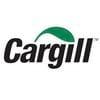Introduction
One of the most important reasons to reject the use of growth promoter antibiotics is the risk of transferring resistant bacteria from animals to humans. This concern is justified when the same drugs are used in both human and veterinary medicine. Flavomycin (flavophospholipol) is an active drug used only in animal production and it does not have the necessary pharmaceutical activity to be used as a therapeutic agent in animals or humans. The literature shows that this growth promoter is highly efficacious in reducing the populations of potentially-pathogenic organisms such as Salmonella sp., Escherichia coli, Clostridium perfringens and Campylobacter sp. (Bolder et al., 1999; Butaye et al., 2003). This effect is due to the formation of lactic acid by lactobacillus and bifidobacteria, which results in the production of volatile fatty acids that are antagonistic for the growth of such pathogens, and the decreased excretion to the environment (Butaye et al., 2003; Stutz and Laron, 1984). In addition of its effect on bird''''s microflora, flavomycin used to improve both body weight gain and feed conversion rate (Esteve-garcia et al., 1997). In spite of the fact that this effect is well known, the scarcity of studies with this molecule results in underestimated dose rates currently in the poultry industry, mostly because of its use has been reduced drastically in the last decades. The purpose of this study was to evaluate the best dose-response for 1-42-day-old broilers.
Materials and Methods
The experiment was conducted in the Teaching/Research Poultry Facilities, UFRGS, Brazil, using 900, one-day-old Cobb x Cobb 500 male broilers. The animals were vaccinated in the hatchery for Marek''''s disease and infectious bursal disease. The birds were divided in 5 treatments with 12 experimental units each. The feeding regime included 4 phases, i.e., pre-starter, 1-7 days; starter, 8-21 days; grower, 22-35 days; finisher, 36-42 days of age. The feeds were formulated to be isoenergetic and isoproetin, with the only difference of both the inclusion of the growth promoter and its dose rates. Treatments consisted in 5 different inclusion levels of the growth promoter i.e., 0, 2, 4, 8 and 16 ppm flavomycin. Animal performance was evaluated weekly for up to 42 days of age. At 21 days of age, all animals showing locomotive disorders or sexing errors were culled. The parameters evaluated included mortality-corrected feed conversion rate (FCR), feed intake (FI), body weight gain (WG), body weight, and mortality (MORT). The latter was checked periodically and the most probable cause was recorded. The lighting program observed the recommendations in the Cobb Management Manual. Animal environment was observed/recorded daily. For thermal comfort, heaters, fans and foggers were used, as needed. Hanging feeders and nipple drinkers were used. Feed and water were given ad libitum. Wood ss were used as litter. The statistical analysis was performed using the SAS (2004) package - PROC GLM and PROC REG. The means were analyzed using Tukey´s test at a 5% significance level.
Results and Discussion
Performance data is summarized in Table 1. Regression curves and equations are shown in Figure 1 and Table 2, respectively. As shown in Table 2, the treatment with no flavomycin showed the worst performance when compared with the supplemented treatments, regardless of the dose rate, which could be due to increased nutrient competition between the microflora and the intestinal villi (Lorençon et al., 2007). Significant responses were seen in terms of body weight gain, feed conversion rate and feed intake in the period from 1 to 21 days. Regarding feed intake, the results from 1 to 21 days of age show that the flavomycin-supplemented treatments showed no statistical difference with the non-supplemented control, with the exception of the 16 ppm dose rate (P=0.0039), which was better. The treatment containing 16 ppm flavomycin was different (P=0.0039) from those including 0, 2 and 4 ppm, but it had no difference with the treatment including 8 ppm in terms of feed intake, resulting to be the best treatments for this parameter in this age period. The treatments with the inclusion levels of 4 and 16 ppm flavomycin were statistically better than the negative control, but equal (P>0.05) to all other inclusion levels, as far as feed conversion rate is concerned. The 2 and 8 ppm inclusion levels were similar (P>0.05) to all other treatments. When looking at body weight gain, the highest flavomycin inclusion level was statistically the same as the dose of 8 ppm but better than all other inclusion levels. The dose rates of 0, 2 and 4 ppm were statistically the same (P>0.05). These results as consistent with those reported by Parks et al. (2001) in their research using E. coli challenge where the supplementation with flavomycin resulted in significantly better body weight gain as compared with the non-treated controls.
Table 1. Performance of flavomycin-supplemented broilers
*Means followed by different letters in a column are statistically different as per Tukey´s test (P<0.05).
Figure 1. Regression graph of the parameters feed conversion rate and body weight gain
Table 2. Regression equations in response to the dietary inclusion of flavomycin, from 1 to 42 days
WG = Body weight gain; FCR = Feed conversion rate
For the 22-42-day period, feed intake showed no statistical differences among treatments. Flavomycin inclusion levels were better (P<0.0001), since FCR was lower in the supplemented animals. Body weight gain was improved with the growth promoter supplementation in the period from 22 to 42 days. In the period from 1 to 42 days, flavomycin supplementation was efficient, since body weight gain was improved while feed conversion rate was reduced in all supplemented treatments. Feed intake showed no significant response in the total period from 1 to 42 days. Dawson (1997) reported that using flavomycin in the birds challenged with E. coli had increased body weight gain but feed conversion rate was not decreased. Nevertheless, Ashayerizadeh et al. (2009) reported that the use of flavomycin resulted in increased body weight gain and decreased feed conversion rate in the supplemented animals.
The use of this feed additive at increasing dose rates resulted in improved performance up to the dose of 10.9 ppm, as shown in Figure 1. This can be attributed to an increased selection pressure on intestinal bacteria, that at higher dose rates led to the selection of an increased number of both lactobacilli and bifidobacteria, lowering the surrounding pH and inhibiting the growth of potentially-pathogenic bacteria.
Conclusions
The feed including Las 2 ppm or more flavomycin results in superior performance when compared with the negative controls, but no difference between 2 ppm and all other inclusion levels as per Tukey''''s test (P<0.05), from 1 to 42 days.
Broilers fed flavomycin-supplemented feeds show improved levels of both body weight gain and feed conversion rate. Flavomycin concentrations optimizing body weight gain and feed conversion rate are 10.9 and 10.14 ppm, respectively.
Bibliography
Ashayerizadeh A, Dabiri N, Ashayerizadeh O, Mirzadeh KH, Roshanfekr H, Mamooee M. 2009. Effect of dietary antibiotic, probioticand prebiotic as growth promoters, on growth performance, carcass characteristics and hematological indices of broiler chickens. Pak. J. Biol. Sci. 12:52-57.
Bolder NM, Wagenaar JA, Putirulan FF, Veldman KT, Sommer M. 1999. The effect of flavophospholipol (flavomycin) and salinomycin (sacox) on the excretion of Clostrid-ium perfringens, Salmonella enteritidis, and Campylobacter jejuni broilers after experimental infection. Poult. Sci. 78:1681-1689.
Butaye P, Devriese LA and Haesebrouck F. 2003. Antimicrobial growth promoters used in animal feed: effects of less well known antibiotics on gram-positive bacteria. Clin. Microbiol. Rev. 16:175-188.
Dawson KA. 1997. Mechanisms, development and applications of microbial competitive exclusion strategies in animal production systems. pp159-175. In: Proceedings for the Arkansas Nutrition Conference. University of Arkansas, Fayetteville, AR.
Esteve-Garcia E, Brufau J, Perez-Vendrell A, Miquel A, Duven K. 1997. Bioefficacy of enzyme preparations containing β-glucanase and xylanase activities in broiler diets based on barley or wheat, in combination with flavomycin. Poult. Sci. 76:1728-1737.
Lorençon L, Nunes R, Pozza P, Pozza M, Appelt M, Silva W. 2007. Utilization of growth promoter for broiler chickens in mashed and pellets diets. Acta Scientiarum. Animal Sciences 29:210-219.
Parks CW, Grimes JL, Ferket PR, Fairchild AS. 2001. The effect of mannanoligosaccharides, bambermycins, and virginiamycin on performance of large white male market turkeys. Poult Sci. 80:718-723
SAS Institute, 2004. SAS User''''s Guide: Statistics, Version 8.0 Edition. SAS Institute, Cary, NC.
Stutz MW & Lawron GC. 1984. Effects of diet and antimicrobials on growth, feed efficiency, intestinal Clostridium perfringens, and ileal weight of broiler chicks. Poult Sci. 63:2036-2042.














